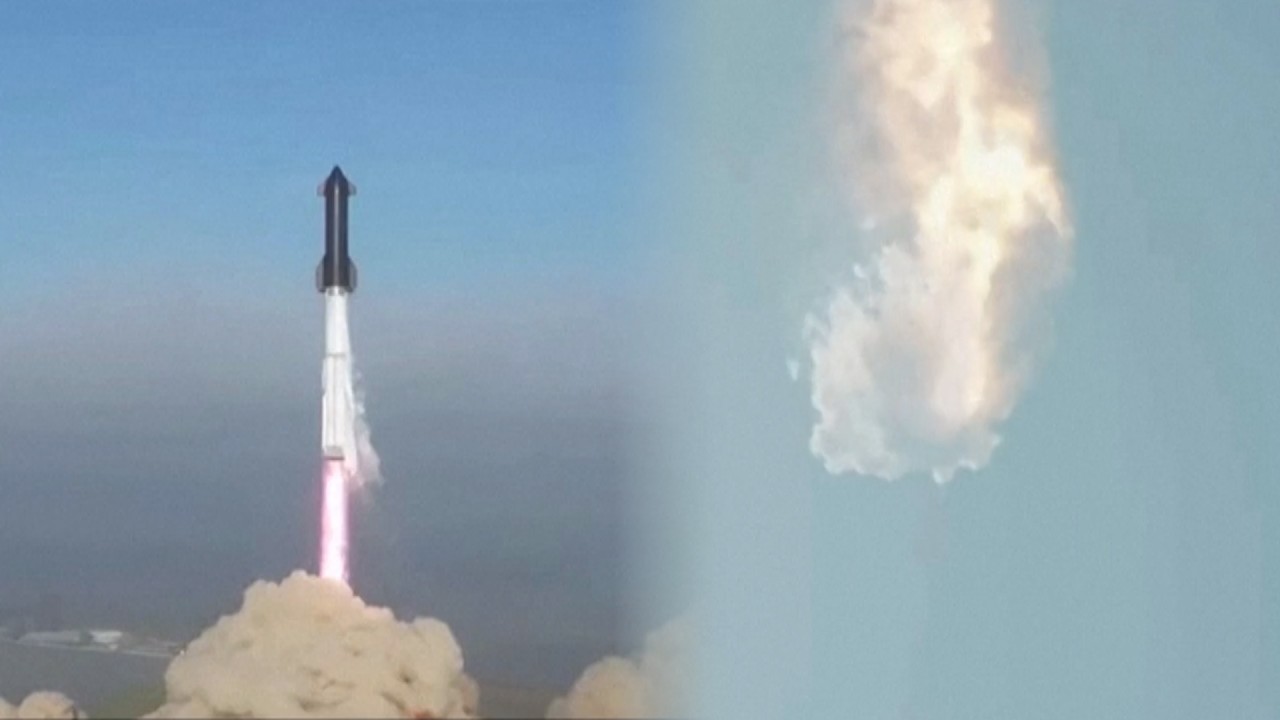
China’s space enthusiasts debate Elon Musk’s Starship explosion: expensive failure or partial success?
- One Beijing-based engineer says the explosion shortly after lift-off highlights the risks of relying on multiple engines to get the rocket off the ground
- Hong Kong-based academic argues that getting the world’s largest rocket off the ground counts for something and SpaceX would learn valuable lessons
The 120-metre (393ft) rocket blasted off from SpaceX’s launch site in Boca Chica, Texas on Thursday morning local time with thousands of tonnes of fuel on board, climbing slowly for two minutes, before its engines started to fail until it exploded – an outcome the company described as as “rapid unscheduled disassembly”.
Hundreds of thousands of people in China watched the launch online. On the social media platform Weibo, some described it as “a specular firework that’s worth US$3 billion”. One scientist speculated that it might have a knock-on effect on Nasa’s Artemis project, by setting back its timetable to return to the moon.
Others argued that the flight went beyond SpaceX’s expectations, citing the company’s comments that the main goals were to “clear the launch pad, collect data, and get ready to go again”.
Astrophysicist Quentin Parker, who leads the Laboratory for Space Research at the University of Hong Kong, said it was a truly awe-inspiring sight to see the largest rocket ever built take off.
“SpaceX was already indicating the chances of success were low. They launched it anyway. Why? Because they could learn expensive lessons about how to do it better and more successfully next time,” Parker said. “It flew!
“For me, the launch was much more a glass half-full scenario rather than glass half -empty. A moderated success.”
But one rocket engineer working for a space start-up in Beijing did not agree. “Technically, this is definitely a failure,” he said.
He pointed out that three out of Starship’s 33 first-stage Raptor engines were already out at lift-off. Another three failed when the rocket reached an altitude of 10km (6 miles), and two more went out at the altitude of 20km.
“The rocket lost a lot of thrust and fell quickly,” said the engineer, who spoke on condition of anonymity.
While such a result did not really surprise him or his colleagues, a main reason for this type of engine failure was having too many of them working in parallel at the same time, which dramatically reduced the reliability of the rocket, he said.
“Say, if an engine’s reliability is 99 per cent, the chance to have 33 of them go as planned simultaneously is down to less than 75 per cent,” he said. “This has been one of the biggest technological controversies over Starship.”
Using multiple rocket engines to create enormous thrusts was not new, he noted. The Soviet N1, a rival to the US Saturn V rocket, had 30 engines which needed to work in a choreographed fashion to lift off.
But all attempts to launch the N1 failed in the late 1960s and early 1970s, sealing the Soviets’ fate in the race to the moon.
One proposed design for China’s Long March 9, the future superheavy rocket intended to send Chinese astronauts to the moon, will use 30 Raptor-like engines in its first stage and could eventually use as many as 50.
“Chinese companies should be careful chasing this highly risky technical route and avoid repeating the mistakes of the N1 rockets,” he cautioned.
In a post-launch tweet, Musk said that the SpaceX team “learned a lot for the next test launch in a few months”.
“We need to accept failure like SpaceX does as part of a path that can lead to greater future success,” Parker said. “This is because when we do succeed, past failures do not seem important, and people remember the successes.”


